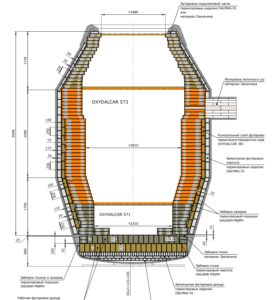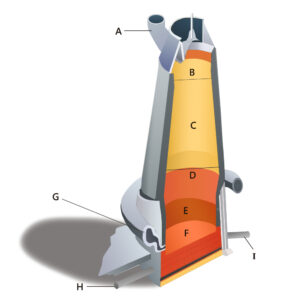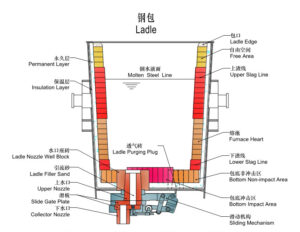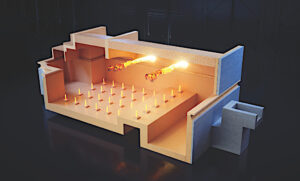Industrial furnaces are heating systems used in various industries to process materials at high temperatures. They are designed to withstand extreme heat and are used for a variety of processes such as melting, annealing, tempering, and heating materials to a high temperature for chemical reactions. Examples of industrial furnaces include rotary kilns in the cement industry, continuous tank furnaces in the glass industry, and tunnel kilns in the ceramic industry. In the steel industry, blast furnaces and electric arc furnaces are commonly used, while non-ferrous metal smelting may use reverberatory furnaces, retort furnaces, or electrolytic furnaces.
The cement industry uses rotary kilns, which are long cylindrical furnaces that rotate on their axis. These kilns are used to heat raw materials to high temperatures to produce clinker, which is then ground into cement. The high-temperature environment in the rotary kiln allows for chemical reactions to occur, which transforms raw materials into the desired cement product. Other types of furnaces used in the cement industry include vertical shaft kilns and preheater towers.
The steel industry uses various types of furnaces for different stages of the steel-making process. Two widely used types of furnaces in the steel industry are blast furnaces and electric arc furnaces. Blast furnaces convert iron ore into pig iron, which can be further processed to make steel. Conversely, electric arc furnaces use an electric arc to melt scrap metal to produce steel. Other types of furnaces used in the steel industry include open-hearth furnaces, basic oxygen furnaces, and induction furnaces.
Non-ferrous metal smelting refers to the process of extracting metals other than iron from their ores. The most commonly smelted non-ferrous metals include copper, zinc, lead, and aluminum. The furnaces used in non-ferrous metal smelting are similar to those used in the steel industry, but are adapted to the specific needs of each metal. For example, copper smelting typically uses reverberatory furnaces, which have a large, flat hearth and a low roof to allow for the oxidation of the copper. Zinc smelting typically uses a retort furnace, which is a cylindrical furnace used to distill zinc from its ore. Lead smelting uses blast furnaces similar to those used in the steel industry, while aluminum smelting typically uses electrolytic furnaces.
Glass furnaces are used to melt raw materials such as sand, limestone, and soda ash to produce glass. The most common type of furnace used in the glass industry is the continuous tank furnace. This type of furnace is a large, refractory-lined vessel that holds the molten glass. The glass is continuously drawn from the furnace using a process called float glass production. Other types of furnaces used in the glass industry include pot furnaces and electric furnaces.
The ceramic industry uses a variety of furnaces to produce ceramic products. Tunnel kilns are commonly used in the ceramic industry to fire ceramic tiles, porcelain, and stoneware. These kilns are long, tunnel-like structures that allow for continuous firing of ceramic products. Other types of furnaces used in the ceramic industry include roller hearth kilns, shuttle kilns, and electric kilns. These furnaces provide a controlled environment to fire ceramics to the desired temperature, resulting in a durable and functional finished product.

Converter steelmaking is a process of steelmaking that uses mainly pig iron, scrap steel, and

A blast furnace is a vertical iron-smelting furnace with a circular cross-section. The furnace shell

Ladle arc refining furnace is a kind of furnace outside refining technology that uses arc

Glass furnaces are a crucial component of glass manufacturing plants, as they are responsible for
Senior experts in kiln construction, maintenance solutions and refractory supply chain from China. To provide you with one-stop service, higher efficiency and better experience.
WhatsApp us
We will contact you within 1 working day, please pay attention to the email with the suffix “una@sdrobert.cn”.
We will regularly share knowledge about refractory materials and kilns. If you want to receive a subscription, please leave your email. And we will send our product manual to you.